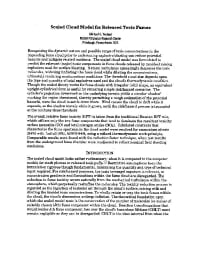Mining Publication: Scaled Cloud Model for Released Toxic Fumes
Original creation date: January 2001
Authors: MS Wieland
NIOSHTIC2 Number: 20021485
Proc 10th Annual High-Tech Blasting Seminar. Allentown, PA: Blasting Analysis International, Inc., 2001 Jan; :1-18
Recognizing the dynamic nature and possible range of toxic concentrations in the impending fume cloud prior to undertaking explosive blasting can reduce potential hazards and mitigate related incidents. The scaled cloud model was formulated to predict the relevant (major) toxic components in fume clouds released by nonideal mining explosives used for surface blasting. Natural turbulence unceasingly disperses the toxic molecules, widening (inflating) the fume cloud while diluting the concentrations, ultimately rendering nonhazardous conditions. The threshold cloud size depends upon the type and quantity of total explosives used and the cloud's thermodynamic condition. Though the scaled theory works for fume clouds with irregular (odd) shape, and equivalent upright cylindrical form is useful for rendering simple risk/hazard scenarios. The cylinder's projection downward on the underlying terrain yields a circular 'shadow' marking the region threatened, thereby permitting a rough estimation of the potential hazards, were the cloud to settle down there. Wind causes the cloud to drift while it expands, so the shadow travels while it grows, until the risk/hazard process is truncated at the nonhazardous threshold.

NIOSHTIC2 Number: 20021485
Proc 10th Annual High-Tech Blasting Seminar. Allentown, PA: Blasting Analysis International, Inc., 2001 Jan; :1-18
- Advances in Grid-Based Numerical Modeling Techniques for Improving Gas Management in Coal Mines
- Behavior of Nitrogen Oxides in the Product Gases from Explosive Detonations
- Factors Affecting ANFO Fumes Production
- Factors Affecting Fumes Production of an Emulsion and ANFO/Emulsion Blends
- Monitoring and Removal of CO in Blasting Operations
- Smoke Reversal Interaction with Diagonal Airway - Its Elusive Character
- A Technique for Measuring Toxic Gases Produced by Blasting Agents
- Technology News 488 - Migration of Blasting Fumes into a Western Pennsylvania Home
- Use of CFD Modeling to Study Inert Gas Injection into a Sealed Mine Area
- Work Principle for Predicting Explosive Toxic Fumes